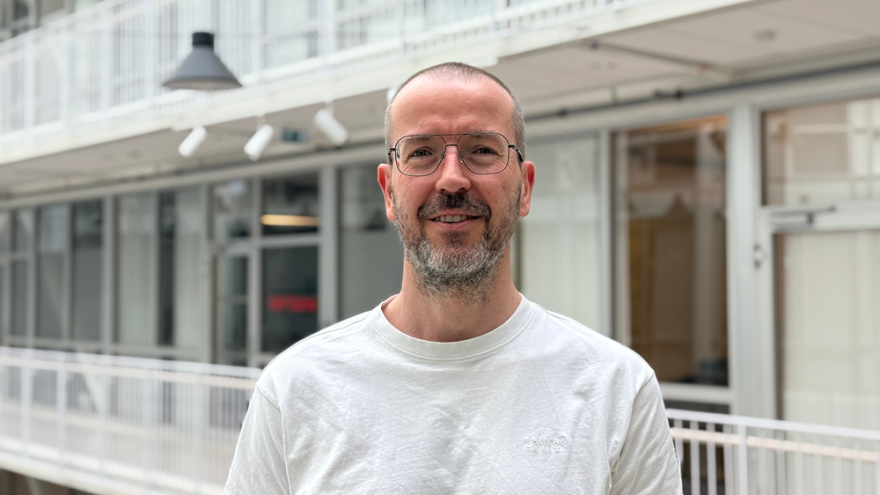When the COVID-19 pandemic hit the Nordic countries in spring 2020, many workplaces had to shut down and employees lost their jobs. What were the economic consequences?
Let's start with the conclusion first.
"In retrospect, the corona crisis from an economic perspective was less dramatic than we thought, because we had an economic upturn afterwards, which meant that the whole crisis didn't really materialise."
So says Simen Markussen, Director of the Frisch Centre at the University of Oslo and leader of the societal security project Lessons for the Nordic welfare states from the Covid19 pandemic.
"We emerged from the pandemic in a strong recovery period. As soon as the restrictions were lifted in spring 2022, we entered a period of economic boom. Therefore, it's hard to see what the long-term effects have been. Many of the employees who were laid off or furloughed returned to work, so many of the fears of crisis time that we had at the beginning of the pandemic simply did not materialise."

Why did things turn out so much better than many feared?
The research team with participants from Oslo, Aarhus, Helsinki, Uppsala and Reykjavik have investigated this.
Using insight into tax, wage and labour conditions from Norway, Sweden, Finland, Iceland and Denmark in the period 2019 to 2022, the researchers can now see what the authorities' compensation schemes for companies during the pandemic have meant for the national economy.
Support schemes should ensure employers and employees
"The authorities had no experience of dealing with a pandemic. We've had crises before, including the financial crisis, but these types of economic crises have often been triggered by completely different factors and haven't been so sudden and disruptive. The Corona crisis had a completely different scope and was on a completely different scale than we have seen before," says Markussen.
In order to avoid mass layoffs and the loss of many jobs, the authorities in the Nordic countries introduced various support schemes. This was to ensure that jobs were kept alive and that employees could keep their jobs.
"We are all countries that have orderly conditions for working life. People have largely fixed contracts and companies pay their employees the wages they are entitled to. Suddenly, companies were left overnight with employees they no longer needed and they needed help from the authorities to reduce labour costs. All of the Nordic countries did essentially the same thing. They introduced schemes to protect employers and employees."
In Norway, a quarter of a million employees were laid off in a short period of time in the spring of 2022.
"In Norway, the layoff numbers reached heights that we've never seen before. They exploded," says Markussen.
Norway and Finland also had a layoff scheme before the pandemic. This means that employers can temporarily avoid paying wages to employees. Conversely, the employees do not lose their job, but is temporarily relieved of work duties. The scheme has been used particularly in industries with seasonal labour, such as the fishing and asphalt industries.
During the pandemic, the Norwegian authorities introduced new rules for layoffs. Employers previously had to pay the employee's salary for the first 14 days of the lay-off period, but now the authorities reduced this to two days and then the state paid compensation for the remaining 12 days of salary.
In Denmark, a slightly different arrangement was introduced. The authorities quickly joined forces with the trade union movement to establish a wage support scheme. While employers in Norway did not have to pay wages to the employee, employers in Denmark had to continue paying wages as before and instead received money from the state as compensation.
In Sweden, they introduced a scheme similar to the Danish one.
Sleeping pillow or absolute necessity?
There were different opinions about the subsidy schemes. Some called them a sleeping pillow, others a necessary measure.
"The economy was put in a kind of freezer and the attitude was that we had to take care of the companies and the employees, and then we could pick up the economy again when the crisis was over. Other economists suspected that there were employees who should have been working but were not. Not because they were lazy, but because employers might have had redundant employees in the first place. Maybe there were companies that were actually on the verge of bankruptcy, but then they got rid of the employees and got some support schemes so they could live on as zombie businesses."
Denmark was first movers
Contrary to expectations, none of the Nordic countries entered an economic crisis. The results of the research project show that at the start of the pandemic, in spring 2022, there was a decline of around eight per cent in working hours in the private sector in Norway, Finland, Iceland and Denmark. In Sweden, the decrease was slightly less, at six per cent.
"This tells us a couple of things. One is that even though Sweden shut down much less than the other Nordic countries, there was still a decline in the economy. If we instead look at the big picture throughout the crisis, the figures look slightly different for all the Nordic countries,‘ he says, adding:
"We can see that the reduction in working hours seems to be least in Denmark. Denmark was actually the first movers here. It was Denmark that tightened up the most and shut down the country first, but it also seems that it was Denmark that came back the fastest, and the reduction in labour activity in the private sector was least in Denmark at around three percent," says Markussen.
In Sweden and Iceland, the reduction in labour activity was four percent, and in Norway and Finland it was between five and six percent.
"We also found something that we think is a bit strange and that we don't quite understand. We see big differences between genders in Finland and Iceland. In Finland, it was women who were hardest hit, while in Iceland it was men. And in all countries, it was the highly educated who were least affected by the restrictions," he says.


